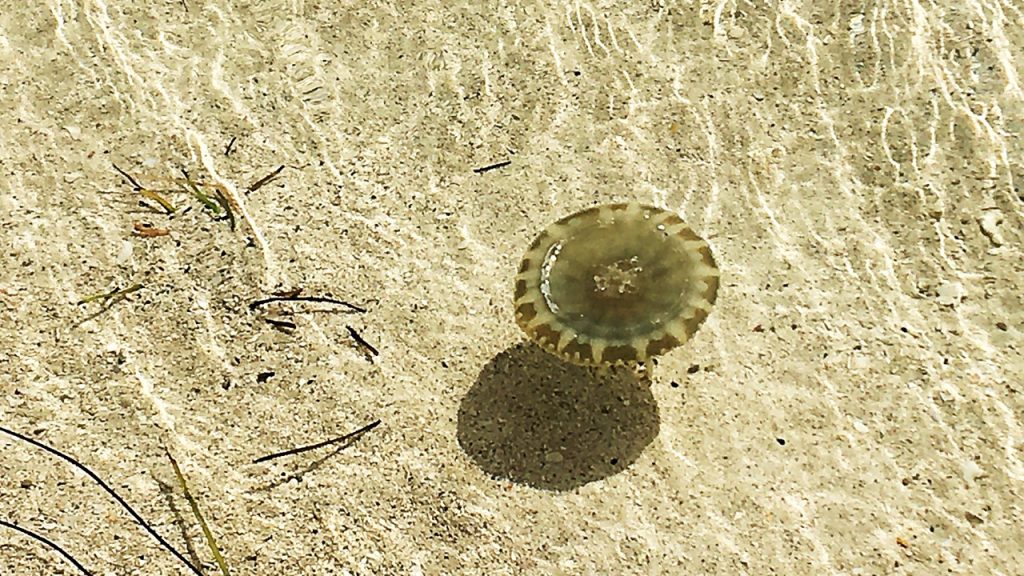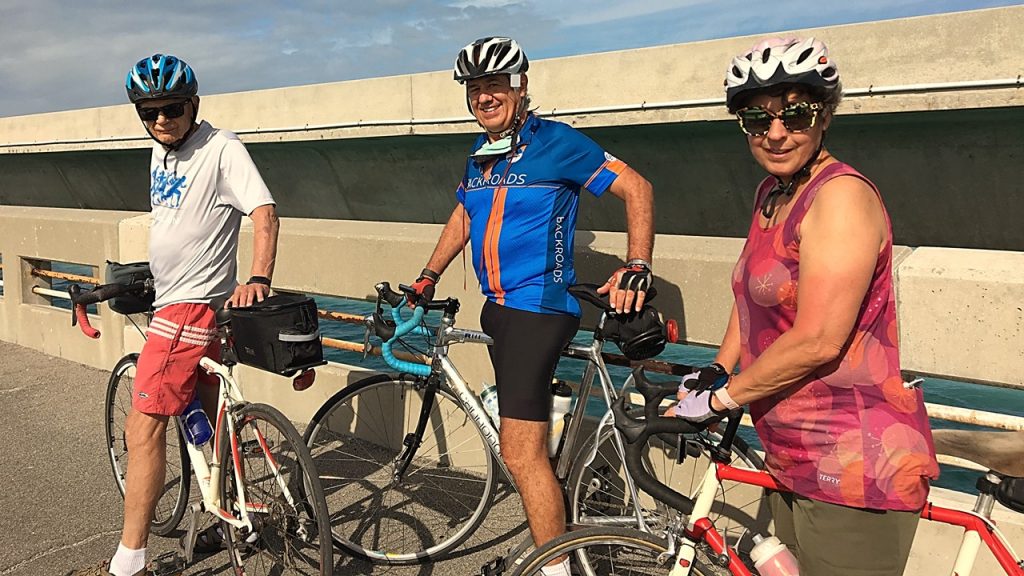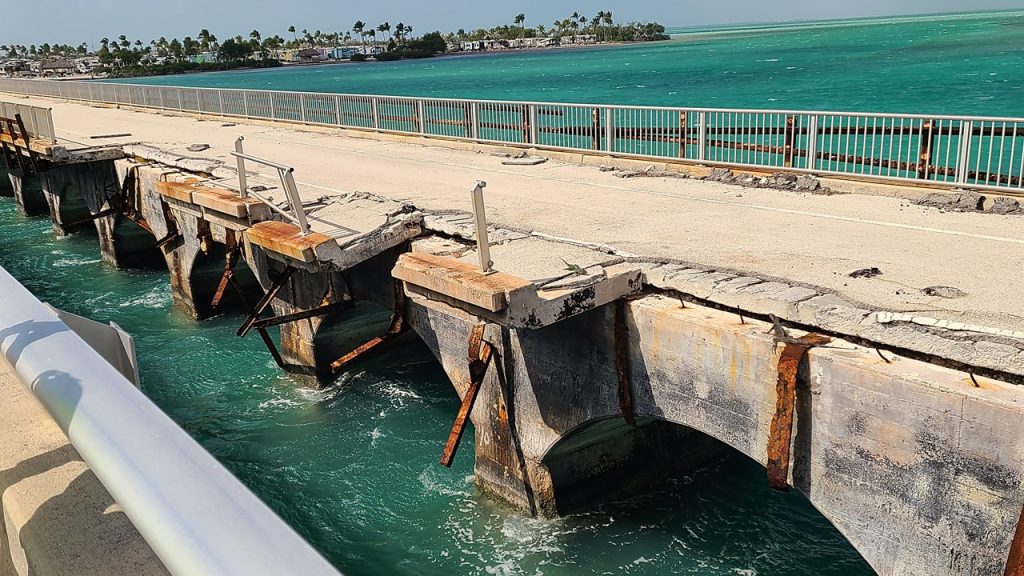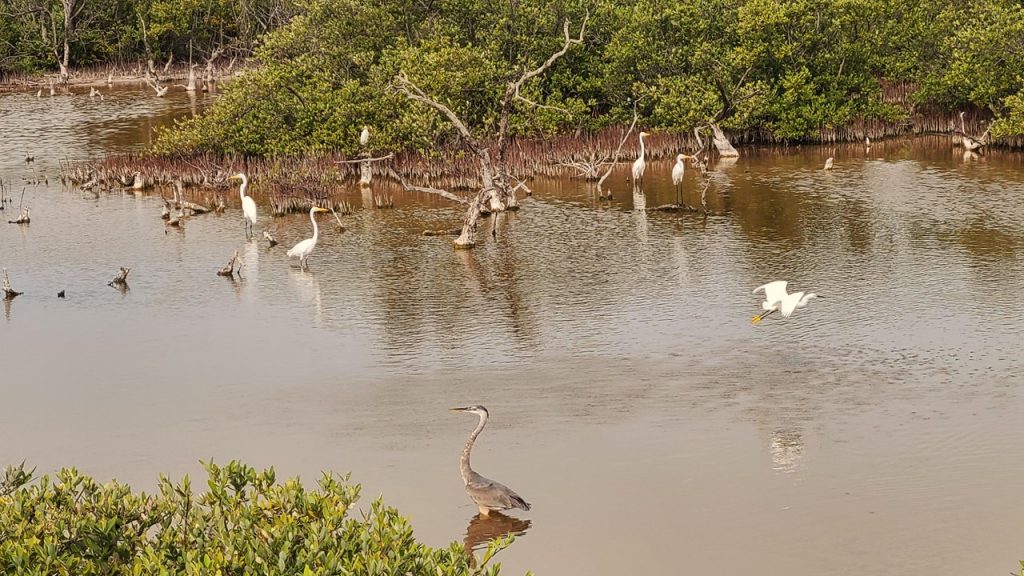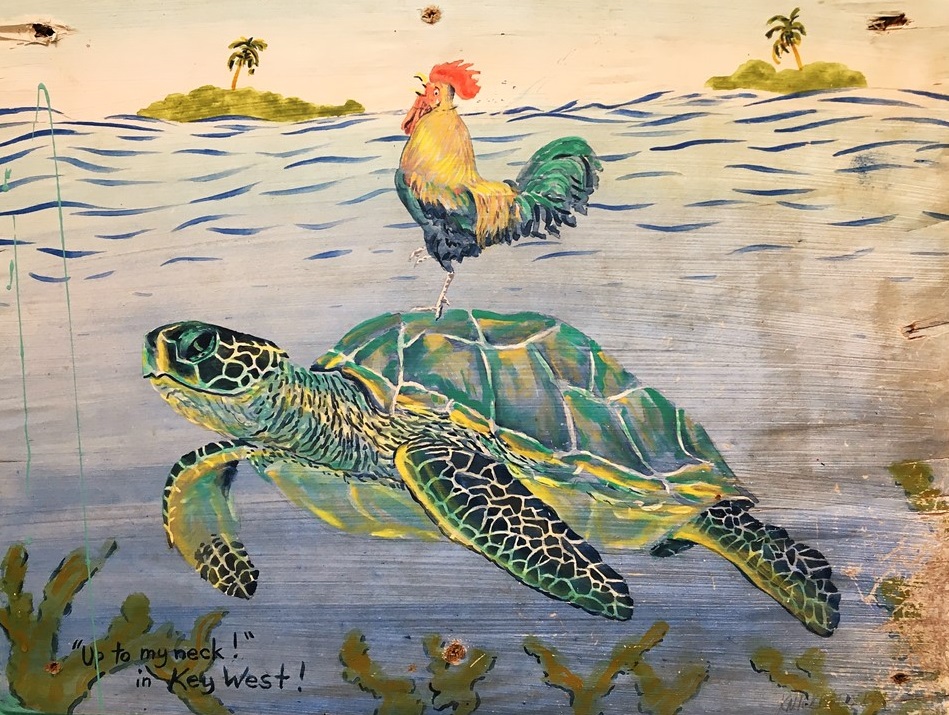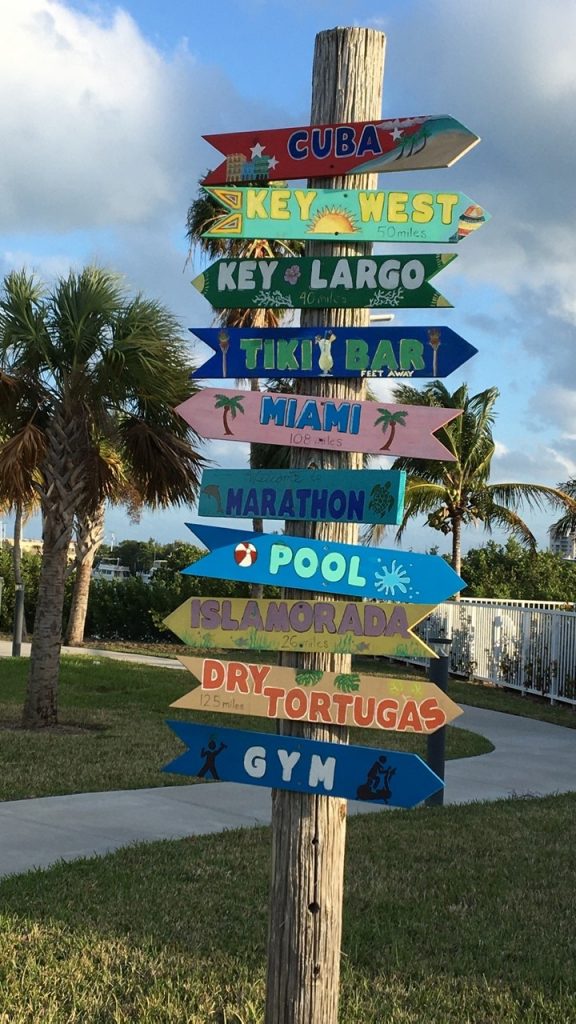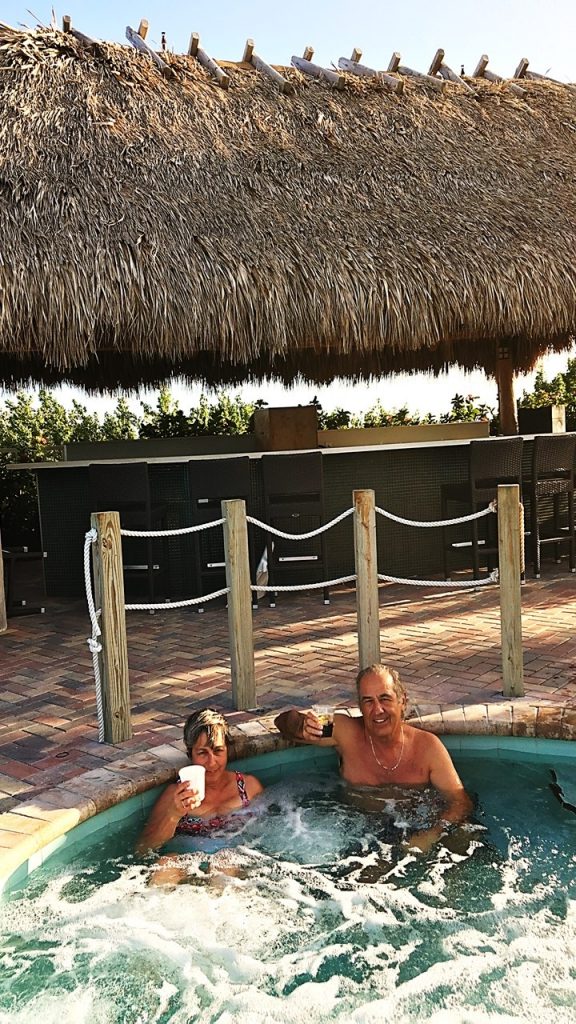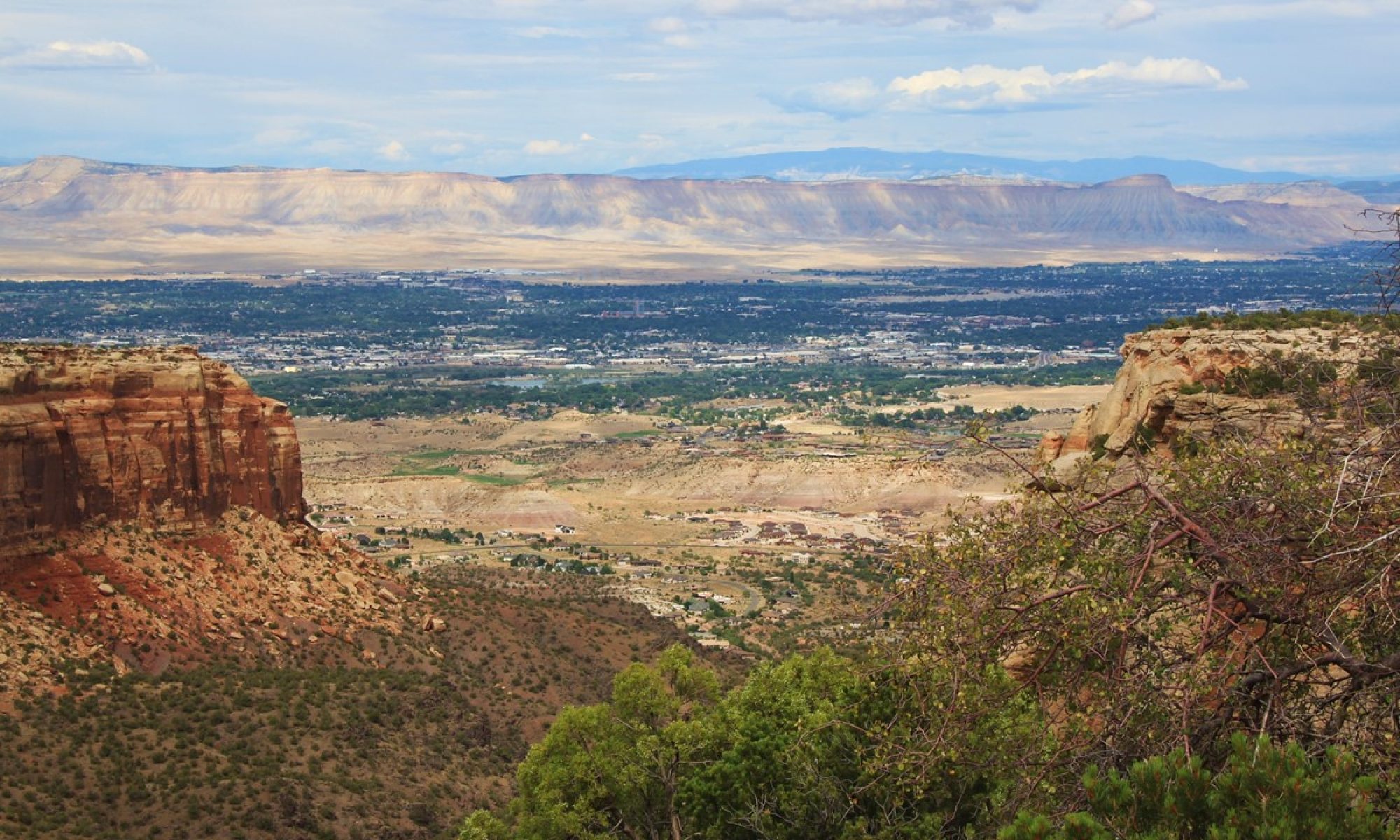January 2021
Monday morning, we returned to “The Midway Café” for breakfast which was much busier with local workmen who frequent the place. After breakfast, we gathered our belongings and checked out of our rooms and drove south to a parking area, (Mile Marker 50), located beside the biking path. Although the spaces were full, we parked on the grass (with the permission of a local police officer) and began cycling south into Marathon. We had planned to ride to Pigeon Key via a refurbished part of the old Flagler Bridge but were informed that that part was still under construction and was not yet open. We started off anyways and had only covered ~1.5 miles when black clouds arose, and a huge rainstorm appeared on the southern horizon heading straight for us. We ducked for cover at a nearby service station and waited for the worst to blow by, and then cycled back to the cars in a light rain. We decided to instead, drive south and explore, while waiting for the weather to improve.
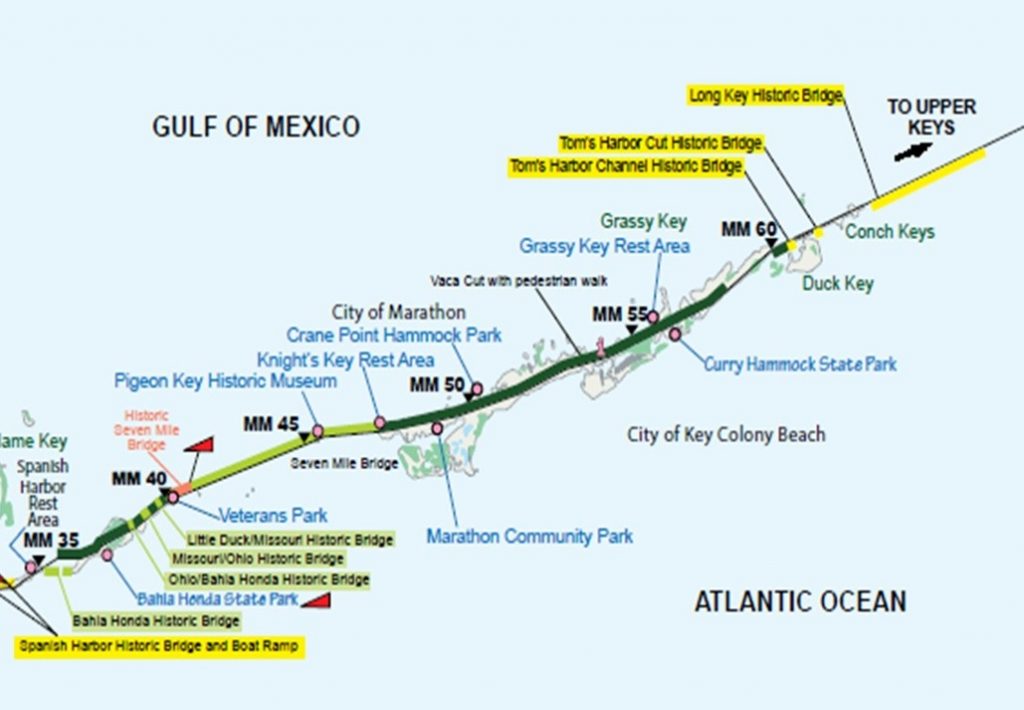
At the southern end of Marathon Key, (mile marker 47), is the famous “Seven Mile Bridge”. This was originally a railroad bridge and part of Flagler’s Florida East Coast Railroad (FEC) to Key West. However, when the railroad bridge was damaged by the Labor Day Hurricane of 1935, (200 mph winds and the lowest barometric pressure ever recorded in the Western Hemisphere), the line was sold to the United States Government, which then refurbished the Seven Mile Bridge, along with many other railroad bridges, for automobile use. In 1935 the bridge was widened for two-way traffic with a swing span to allow passage of boats in the Moser Channel of the Intracoastal Waterway. The swing span was located just south of where the bridge crosses Pigeon Key, a small island in the middle of the span that was used as a work camp for Flagler’s railroad construction crews. Then, in 1960, Hurricane Donna caused further damage and necessitating a more permanent solution. The current road bridge east of the historic bridge was constructed from 1978 to 1982. Today, much of the original bridge still exists, although the swing span has been removed. The 2.2-mile section to Pigeon Key, used as a fishing pier and long open to motorized vehicles to give access to the key, was closed to motorized traffic in 2008 after the unsupported sections began to sag. In 2014, the Florida Department of Transportation approved a $77 million plan to restore the old bridge. By 2017 the pedestrian section was closed, with extensive repairs predicted to be finished by about late 2021.

South of the Seven Mile Bridge is a series of small keys, (Little Duck, Missouri, and Ohio Keys), all connected by short bridges and accompanied by fishing/biking bridges located immediately east of U.S. 1, although not all of them are currently open. To the east of U.S. 1, connecting Bahia Honda Key to the Spanish Harbor Keys is the historic Bahia Honda Railroad Bridge also built by Henry Flagler as part of the FEC’s Overseas Railroad. In 1904 Flagler started what everybody considered a folly: the extension of the FEC Railroad to Key West which would later be known as the Overseas Railroad. At the time of its completion, it was considered the eighth wonder of the world, and was the most daring infrastructure ever built exclusively with private funds. The first train arrived in Key West on January 21, 1912 with Flagler arriving himself the next day. Flagler died soon after, and the railroad required significant maintenance due to storms and corrosion. Again, the Labor Day Hurricane of 1935 destroyed much of the line, and FEC sought abandonment of the project. Instead, the parts south of Dade County were purchased by the State of Florida and converted for highway use in 1938. However, the Bahia Honda channel was the deepest (28 ft) and instead of using concrete arches that supported all the other bridges, it was built with steel trusses high above the wave peaks. Since these railroad trusses were too narrow for two-lane automobile traffic, rather than rebuilding the bridge, the State redecked the top of the structure for use as the Overseas Highway. It must have been a harrowing automobile crossing high in the air atop those rusting steel trusses from 1940-1970! Thankfully, a new four-lane bridge was later built and opened in 1972, a few hundred yards northwest of the old bridge replacing the former route of U.S. 1. Two of the original truss spans were then removed – one near the east end to allow boat traffic to pass through Bahia Honda Channel without the danger of falling debris from the old bridge and the other at the westernmost end to prevent pedestrians from accessing unsafe parts of the bridge. It is a misconception that the trusses were removed to facilitate traffic for boats needing higher vertical clearance, as the new bridge has roughly the same vertical clearance of about 20 feet as the old bridge had. Today, the original bridge has fallen into a serious state of disrepair, (signs are posted on the bridge warning boat traffic to watch for falling debris), but all the sections have remained standing (not counting the two that were removed). The easternmost section has remained open to pedestrian traffic and is maintained by Bahia Honda State Park and provides a scenic overview of the area.
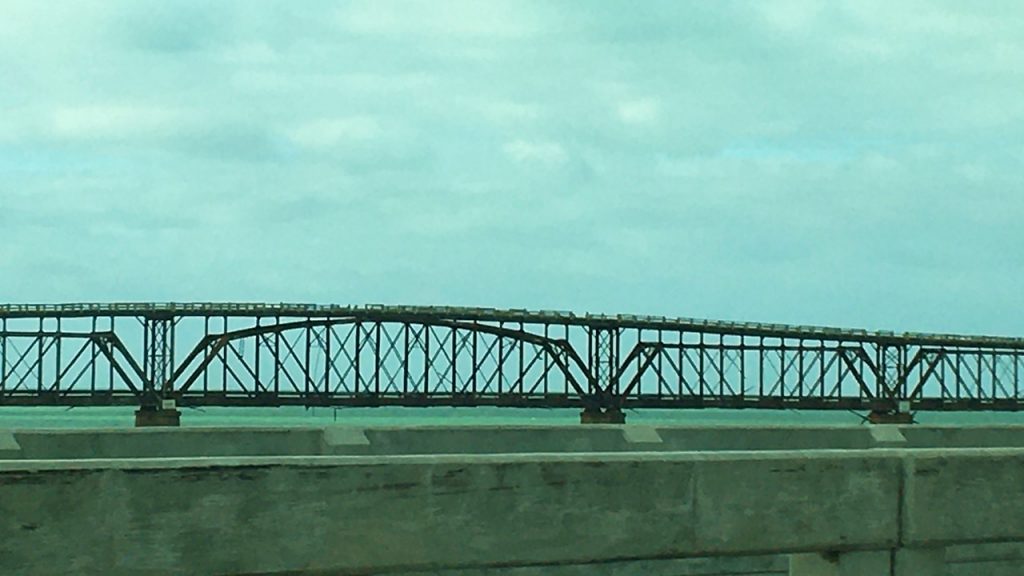
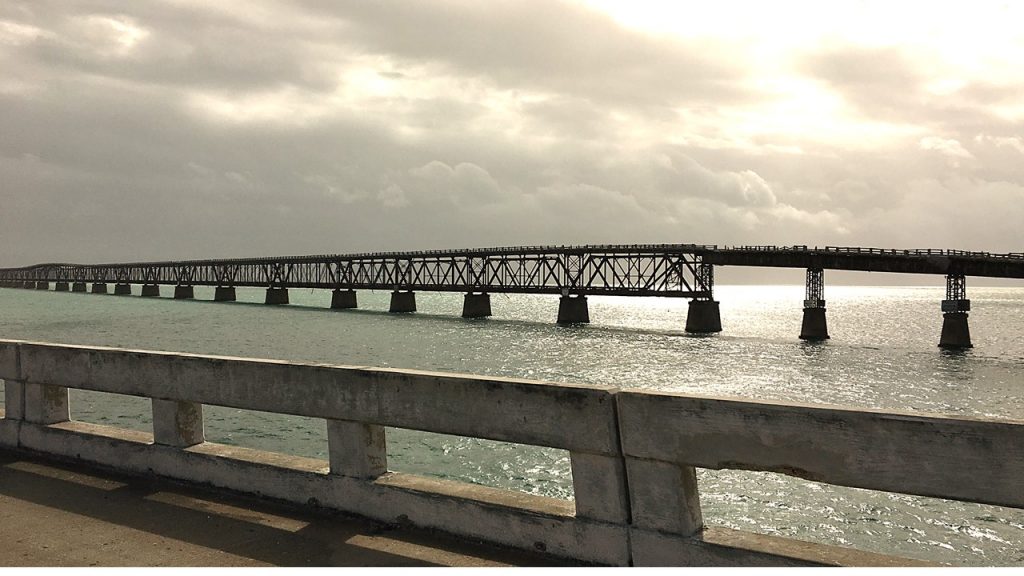
We continued driving to Mile Marker 30 on Big Pine Key where we turned the car around and returned to Bahia Honda State Park (Mile Marker 36). Here we visited the gift shop, explored the beaches, and examined corals and sponges that had washed up, and then unloaded our bikes to begin a ride out of the park north to the northeastern tip of Little Duck Key, (Mile Marker 40 – the southwestern end of the Seven Mile Bridge). After returning and biking every part of Bahia Honda State Park, we loaded up and returned to Marathon where we stopped at a bayside restaurant called “Porky’s” for lobster tacos, wine, and beer. By now, the wind had grown to 30 mph gusts, so we drove to a beautiful oceanfront public beach at “Sombrero Beach” where we walked through the water and collected shells, glass, and coral. Then we drove back to U.S. 1 for a little quick shopping before checking into our Hampton Inn Hotel at Mile Marker 53 on Marathon Key. The hotel had a small deck overlooking the ocean, a tiki bar and hot tub – which we took advantage of to sooth the “wind burn” of the blustery day, even though we only rode 16 miles. That night, we ordered pizza delivered and played several rounds of cards before calling it a night.

